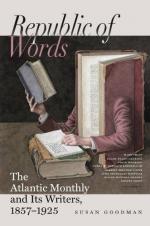Bills of exchange were first used only for the benefit of a specified payee, but it was not long before the element of negotiability was added to foreign bills, which, thus perfected, became at once the indispensable instruments of commerce which they now are. The negotiability of inland bills and of promissory notes was not recognized till long afterwards. In England, inland bills were not used in any form till about the middle of the seventeenth century; and Lord Holt, in a case reported half a century later, said he remembered the time when actions upon inland bills first began. Indeed, the earliest case in which foreign bills of exchange are mentioned in the English Reports is as late as the first year of the reign of James I., though they appear to have been known to the courts in the preceding reign of Elizabeth, for there are extant precedents of declarations upon them of that period. The earliest reported case of an inland bill occurs in 1663. It appears that the negotiability of promissory notes was a matter of doubt with the Court of Queen’s Bench as late as 1702. The court seem to have felt very little confidence in their own opinion upon the question; for Chief Justice Holt, after urging his opinion against the negotiability of such instruments, took occasion to speak with two or three of the most famous merchants in London, as to the consequences it was alleged would follow from obstructing their negotiability; and on another day he says that they had told him it was very frequent with them to make such notes, and that they looked upon them as bills of exchange, and that they had been used a matter of thirty years, and were frequently transferred and indorsed as bills of exchange. In 1704 Parliament put an end to the dispute between Lord Holt and the merchants by recognizing the negotiable qualities of promissory notes which now belong to them.
The law of promissory notes and bills of exchange is thus seen to be of very recent origin. In the early part of the seventeenth century there was a single reported case in the English language in this department of legal learning; now these volumes of Professor Parsons present us an array of more than ten thousand oases decided in the highest courts of England and America, and a great majority of these are cases that have occurred within the present century, if not within the last quarter of a century. Though the subject is apparently a simple one, it has presented a multitude of questions for the consideration of the courts, many of which it has taxed their highest wisdom to rightly solve.
A new book in any department of the law has one merit, if it is worth anything at all,—and that is, the merit of presenting the latest conclusions of the courts upon the topics treated of. In the department of the law treated of by the work now under notice, this merit is one of special consideration, for it has hardly reached its full development, and some of its important rules are hardly settled.




